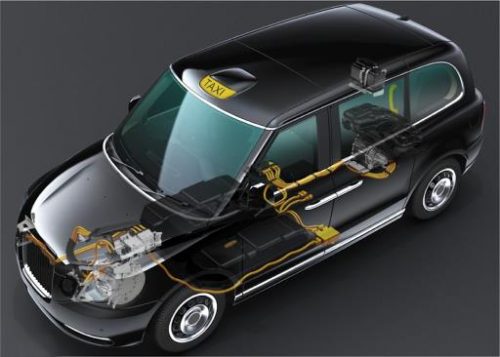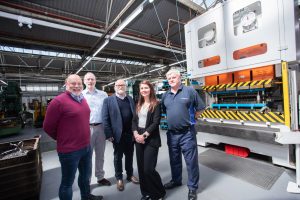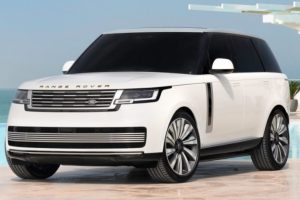GKN puts takeover to one side to focus on Electric Vehicle work

Redditch-based engineering group GKN has put its takeover battle with Melrose to one side to focus on its innovative work in the Electric Vehicle sector.
The group’s Driveline division is working in tandem with Ansty Park-based black cab manufacturer, LEVC (London Electric Vehicle Company, formerly London Taxi Company).
GKN’s EV systems are helping to deliver zero-emissions capability for LEVC’s new London taxi. Its unique coaxial eAxle powers the rear wheels of the new electrified TX model.
The eAxle was launched in its first application across Volvo’s range of T8 Twin Engine plug-in hybrids in 2016. In these models, GKN’s system has an ‘axle split’ secondary drive role, with a 60kW e-motor providing motive power to the rear wheels – working in conjunction with a combustion engine that drives the front wheels.
In the LEVC TX, GKN’s eAxle is the primary drive unit, and so uses a more powerful 120kW e-motor. A small petrol engine at the front of the taxi provides range-extended power to the battery pack only, which means the taxi is always powered electrically by the eAxle. The TX’s pure-electric driving range is around 80 miles, according to official test figures, whilst the petrol generator takes the total range up to 377 miles.
Phil Swash, GKN Driveline CEO, said: “London’s black cab is recognised worldwide, and we are immensely proud that a GKN electric driveline is helping to power a new generation of taxis capable of running with zero emissions. NOx reduction is a key target of global cities and developing cleaner, more efficient taxis will play a significant role in achieving that.
“This project is another showcase for our scalable eAxle technologies, which are enablers of cost-effective plug-in hybrid and range-extended electric models. LEVC is the latest vehicle manufacturer to realise the benefits of GKN’s unique technologies and its expertise as a full systems integration partner.”
Components within GKN Driveline’s coaxial eAxle designs are tightly packaged, with the reduction gearbox, open differential, driveshaft section and e-motor sharing a connected housing. This level of integration has significant benefits when it comes to packaging the eDrive unit within the new taxi’s chassis.
As the range-extender combustion engine is never providing power directly to the rear wheels, the TX does not need a propshaft, which delivers further advantages for weight and packaging.
Production of the electrified LEVC TX is already underway at LEVC’s new Ansty Park facility.
The new taxi meets stricter Transport for London licensing requirements that came into force at the start of the year, which mandate a minimum 30-mile zero-emission range and maximum CO2 emissions of 50g/km for new taxis on the road.








